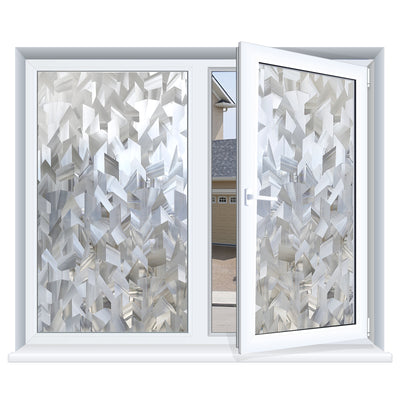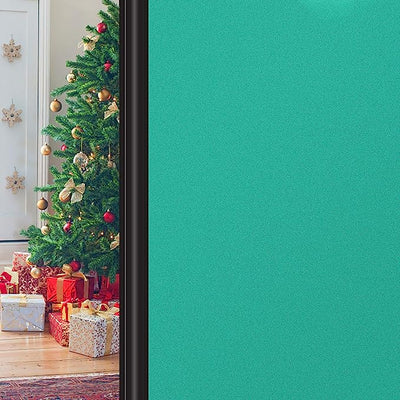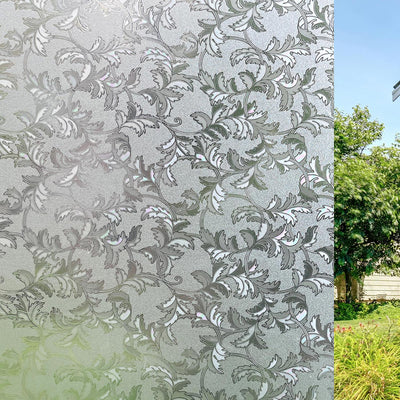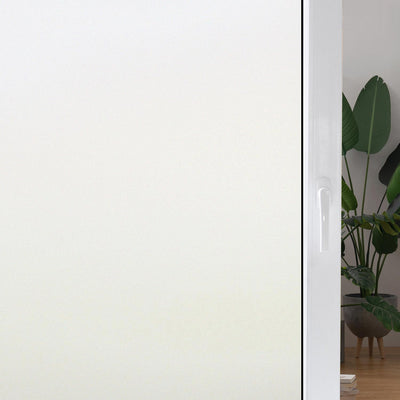HIDBEA Window Film FAQs
PRODUCTS & INSTALLATION
Q: Do I apply the film on the inside or outside of the window?
A: Apply HIDBEA films to the INSIDE only.
Q: What are the five secrets to a successful job?
A: Read the Application Instructions thoroughly before you begin. Collect all needed tools before you begin. These tools include: Soap water solution, a rubber squeegee, a utility knife with breakaway blades, transparent tape, and a single-edge razor blade to clean the glass. Use smaller pieces of "extra" film to practice application before starting your first window. Two people working together make this a very simple project. Apply the application solution generously to keep the glass and the adhesive side of the film wet during the application.
Q: When is the best time to apply film?
A: It is safe to apply the film year-round. We recommends applying the film to cool glass, avoiding direct sunlight. NOTE: Do not apply film when the outside temperature is below freezing (32 F.). Adhesive may crystallize if below freezing temperatures occur within the first three days of film application. For dual pane glass, because the inner pane is more shielded from the outside cold, the outside temperature should not be below 10-12°F to be assured that the application solution does not freeze before curing.
Q: Why do I need to trim a gap around the film edge?
A: Always trim the film before squeegeeing water out from underneath the film. Absorb excess water with paper towel. Trimming the gap prevents air and water bubbles, which are impossible to remove once the film has fully cured (dried). If the film is too large, "fingers" will appear along the edges, usually along the bottom; and as they "grow," they pull dirt under the film. The gap also permits adequate room for the glass to expand and contract, as it becomes warm and cool within the window frame.
Q: How should I clean window film?
A: The best way to clean the film is to use soap water solution and a rubber squeegee. Thoroughly spray the area to be cleaned with the solution. Spray your hand. Rub the area to break up any dirt or grease. re-spray and squeegee. Use lint-free towels or paper coffee filters to wipe up excess soapy solution. It is safe to use Ammonia-based window cleaners if the cleaner doesn't sit on the film for a prolonged period of time (no more than 1-2 minutes).
Q: How long will window film last?
A: The life expectancy of HIDBEA window Film depends upon the type of film, its exposure to the sun, the climate, and its cleaning and maintenance. With average care, the Heat Control and Privacy Control films should have an expected life of up to 15 years. The longevity of film is usually the result of direct exposure to UV rays (part of sunlight). The older the film, the less UV it can absorb effectively. If UV protection is an important reason for using film, we recommend replacing the film every five years. By that time, the protection level has gradually decreased from 99% to about 70% UV reduction, depending upon direct sun exposure.
Q: Will film hurt my indoor plants?
A: The most compatible films for sensitive indoor plants are Heat Control films. These films transmit higher portions of visible light spectrum that plants need for healthy photosynthesis. Darker films (i.e. Glare Control) block too much of that light. Help your plants acclimate to the change in light by adjusting them over a five-day period. On day one, move the plants 1 foot further into the room. On day two, move them another foot. On day three, apply the film. On day four, move the plants a foot closer to the windows. On day five, move them another foot closer.
Q: Can I put window film on my skylight?
A: The most important element of this question is personal safety. Applying film to windows that you can easily reach is a skill that must be mastered before you consider applying film above your head. Anytime you consider applying film to a window that has a bottom edge more than 7 feet above the floor, you should seriously consider one of two options: Work with an equally experienced partner as a team, or Hire a contractor or window film installer to do the work for you. Handling film on a ladder is at least twice as difficult as applying film to a large patio door by yourself.
Q: Why does the film feel warm on hot days?
A: All films feel very warm, even hot, when the windows are hot. The reason why depends upon the type of film, the type of window, and the type of weather. Basically, all films obstruct the transfer of heat from the outside of the window through to the inside of the room. The heat has to work much harder to move through this obstacle, so a lot of energy is dissipated through reflection, absorption, conduction, and convection. When you put your hand on the film, you feel much of this heat energy. Reflection measures how much energy the material reflects back into the glass. The higher the reflection, the greater the "heat gain" reduction.
Q: What is the difference between air bubbles and water bubbles?
A: Water bubbles are pockets of water trapped under the film during an installation. Most small water bubbles will dry out in a few days. Sometimes air pockets remain trapped under the film, and unfortunately these will not disappear without proper squeegee methods. If ample application is still under the film, simply re-wet and re-squeegee the film to remove trapped air. In some cases it may be necessary to lift and re-wet the film.
Q: How do I remove trapped air bubbles?
A: If an air bubble under the film is detected immediately after installation, simply re-spray the film and use the squeegee or wrapped hard-card to push the water toward the nearest edge. If the bubble still remains, it may be necessary to carefully lift the nearest edge, re-spray the adhesive thoroughly, and re-squeegee that region of the film. Before lifting the film, be sure the film edges have been properly trimmed and the borders of the window have been dried with a hard card wrapped in a paper towel to absorb the perimeter gasket moisture. Dry the border first in order to prevent liquid from flowing back under the film.
Q: Can I Apply film to CERAMIC TILES?
A: We do not recommend that these adhesive-backed film products be applied to ceramic tiles. These products are intended for application to smooth, clean, flat glass only.
Q: What is the Curing Time (Drying Time) for films?
A: The film generally has a curing time of 5-7 days. (Factors that affect drying time are temperature, humidity, and whether that film receives sun exposure). Over this time, you should see those small water dimples, if smaller than the eraser on a pencil, disappear.
Q: What causes fading? How much will fading be reduced with window films?
A: Fading of furniture or artwork is caused by UV rays, heat, visible light, indoor artificial lighting, humidity, and the quality of the dye in the fabric. There is general agreement that UV light causes more damage to fabrics than any other single factor. Most HIDBEA films block out about 95% of the UV, which means that, while films cannot completely prevent fading, it can help reduce it.
Q: Can you install film on top of film?
A: Generally, it is not recommended to install film on top of film. "Stacking" solar control films can often result in the glass becoming too warm, raising glass temperatures beyond the manufacturer's suggested limits. Excessive heat can cause seal damage (on dual pane units) or glass breakage.
Q: How do I remove the clear protective liner from the film?
A: Remove the liner by attaching two 3" long pieces of transparent tape to the front and back surfaces of a corner of the film so that about 1" of tape is on the film, and the rest is centered and hanging over the pointed corner of the film. Firmly press the two pieces of tape together and quickly pull them apart to separate the clear liner away from the (dry) adhesive side of the film.
Q: Is there a film that will give me privacy during day and night that still allows me to see out clearly?
A: In a word, no. Nor is there any one-way mirror glass that allows this either. The Privacy Control Mirror film has been designed to provide DAYTIME PRIVACY ONLY. Wherever the greater source of light is, that is the side where the mirror or reflectivity will be. During the day, the greater source of light is the sun. Therefore when looking into your home from the outside you will see a mirror image. When looking from the inside of the home to the outside, you will be able to see clearly. During the night: Since the greater source of light will be the lighting in your home, when you look out your window, you will see the reflectivity or mirror image. Someone looking into your window from the outside will be able to see in if the lights are on indoors.
Q: Can HIDBEA Film be installed on oval or round windows?
A: We do not recommend installation of film on non-rectangular windows. Most non-rectangular windows (curved edges or shapes of special design) are custom cut and scored, causing the likelihood of weak spots and fractures in the film.
Q: What if my window is larger than the film size?
A: To cover windows that are larger than the film size, seam the film as you would with wallpaper. Vertically overlap two sides by ½ inch, and then use a ruler to guide your knife as you cut through the center of both layers of film. (You might practice doing this with film scraps, so that you apply sufficient pressure to cut through both layers but not so forcefully as to scratch the glass.) After cutting the seam, peel the loose strip of film from the top, then lift the edge and slide the waste piece from underneath. Spray the underside of the film as you pull away the freed inner strip. Lay down the film, and re-wet the film along the length of the seam line, then squeegee from top to bottom in a slow, firm vertical motion. Do not squeegee across the seam as you may lift and damage the film edges.
Q: How can I eliminate static electricity?
A: Static electricity can be eliminated by spraying the film surface lightly with application solution. Some static may occur when stripping away the clear protective liner on certain film products. To avoid this problem, spray the front and back surfaces of the film before peeling the liner away (just prior to installation).








































